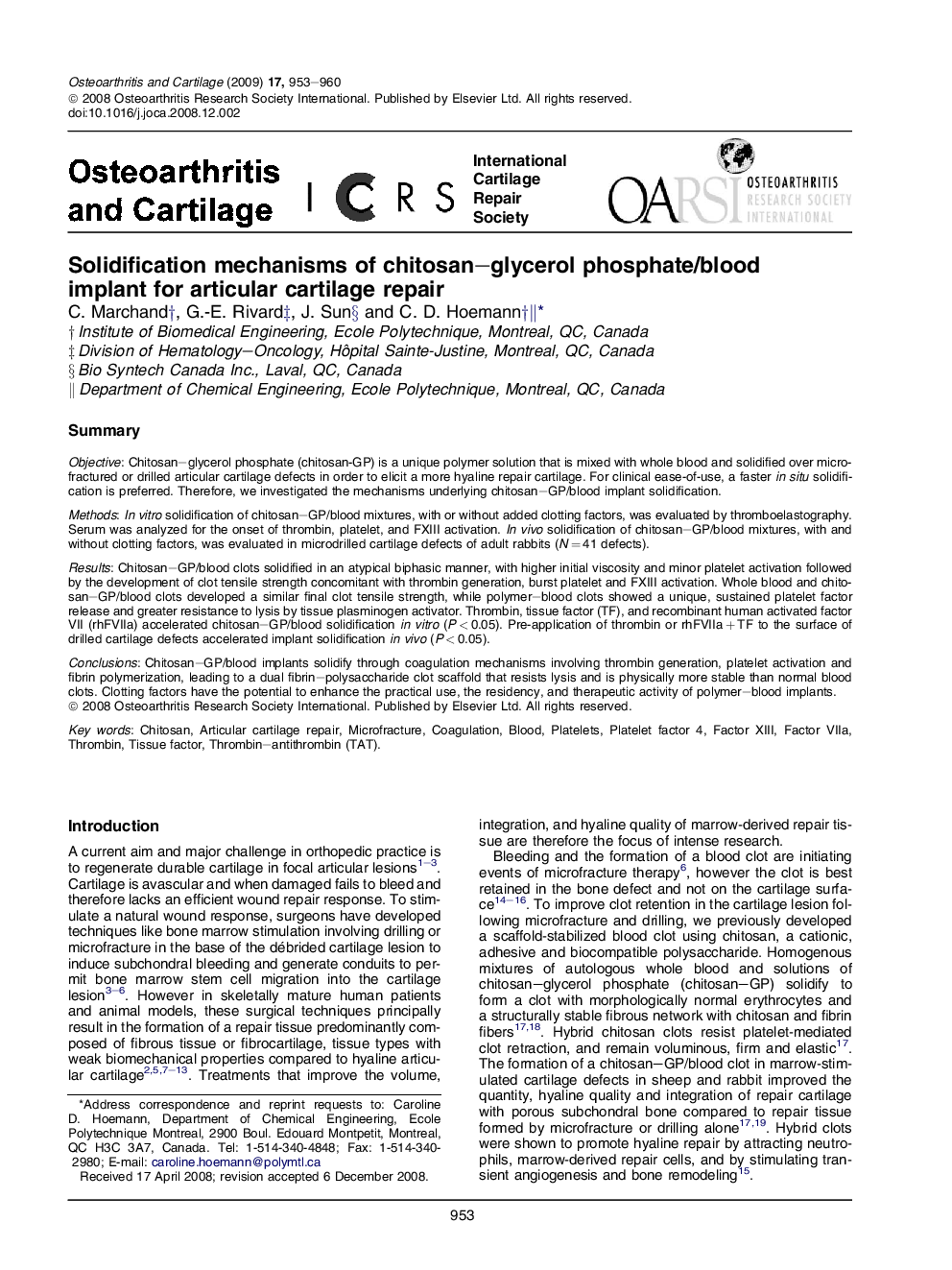| کد مقاله | کد نشریه | سال انتشار | مقاله انگلیسی | نسخه تمام متن |
|---|---|---|---|---|
| 3380934 | 1220227 | 2009 | 8 صفحه PDF | دانلود رایگان |

SummaryObjectiveChitosan–glycerol phosphate (chitosan-GP) is a unique polymer solution that is mixed with whole blood and solidified over microfractured or drilled articular cartilage defects in order to elicit a more hyaline repair cartilage. For clinical ease-of-use, a faster in situ solidification is preferred. Therefore, we investigated the mechanisms underlying chitosan–GP/blood implant solidification.MethodsIn vitro solidification of chitosan–GP/blood mixtures, with or without added clotting factors, was evaluated by thromboelastography. Serum was analyzed for the onset of thrombin, platelet, and FXIII activation. In vivo solidification of chitosan–GP/blood mixtures, with and without clotting factors, was evaluated in microdrilled cartilage defects of adult rabbits (N = 41 defects).ResultsChitosan–GP/blood clots solidified in an atypical biphasic manner, with higher initial viscosity and minor platelet activation followed by the development of clot tensile strength concomitant with thrombin generation, burst platelet and FXIII activation. Whole blood and chitosan–GP/blood clots developed a similar final clot tensile strength, while polymer–blood clots showed a unique, sustained platelet factor release and greater resistance to lysis by tissue plasminogen activator. Thrombin, tissue factor (TF), and recombinant human activated factor VII (rhFVIIa) accelerated chitosan–GP/blood solidification in vitro (P < 0.05). Pre-application of thrombin or rhFVIIa + TF to the surface of drilled cartilage defects accelerated implant solidification in vivo (P < 0.05).ConclusionsChitosan–GP/blood implants solidify through coagulation mechanisms involving thrombin generation, platelet activation and fibrin polymerization, leading to a dual fibrin–polysaccharide clot scaffold that resists lysis and is physically more stable than normal blood clots. Clotting factors have the potential to enhance the practical use, the residency, and therapeutic activity of polymer–blood implants.
Journal: Osteoarthritis and Cartilage - Volume 17, Issue 7, July 2009, Pages 953–960